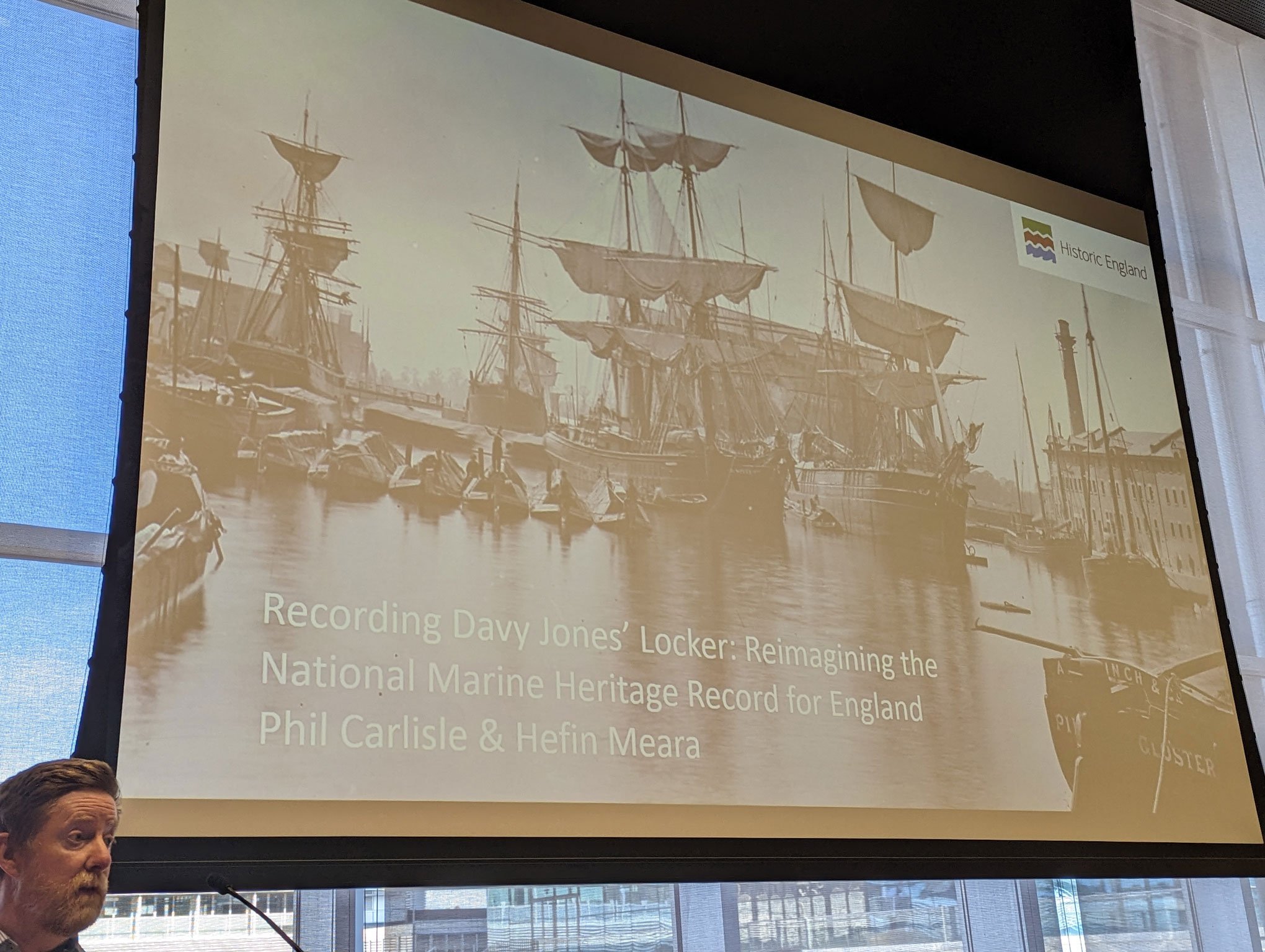Reimagining the National Marine Heritage Record for England
Historic England has presented progress on developing the National Marine Heritage Record at the international Computer Applications and Quantitative Methods in Archaeology Conference (CAA) in Amsterdam.
In April 2023 Historic England colleagues Hefin Meara and Phil Carlisle presented on the development of the new National Marine Heritage Record at the Computer Applications and Quantitative Methods in Archaeology Conference (CAA) in Amsterdam.
The paper presented an overview of the policies behind the National Marine Heritage Record and detailed some of the current thinking surrounding the semantic modelling. Historic England views the redevelopment of the National Marine Heritage Record as fundamental to improving the delivery of the organisation’s marine services.
Public access to marine historic environment records
The National Marine Heritage Record will be the principal online interface for public access to marine historic environment records, and a key means of actively engaging the public in enhancing our knowledge and understanding. It is vital to informing assessments of significance for heritage assets under consideration for designation.
Informing development and marine planning
In addition, the National Marine Heritage Record informs the advice provided by Historic England to the Marine Management Organisation, the Planning Inspectorate, seabed developers and other partner organisations.
The need for a dependable and up to date marine record is demonstrated by the unprecedented scale of change to the seabed that is currently taking place. Production of electricity from offshore wind has risen from an operational capacity of under 700 Mega Watts in 2009 to more than 10,000 Mega Watts by the end of 2020.
Bringing data together
The National Marine Heritage Record will be delivered using the Arches Software platform. The new system, currently called Mariner, will allow a shift in focus from the previous model where the vessel and the wreck were perceived as a single entity to one where the vessel and its physical remains are separate but linked entities allowing for a more accurate representation of our understanding.
The development of a dedicated marine resource will also allow for diverse datasets to be brought together in an integrated way. The Mariner platform will allow for the incorporation of broad scale thematic projects, such as the strategic assessment of submarines in English waters undertaken to mark the centenary of the First World War. We will also be able to incorporate detailed site-specific data, such as the assessments of artefact assemblages from shipwrecks designated under the Protection of Wrecks Act 1973.
Historic England is developing Mariner alongside the Unpath’d Waters project, and the new system will contribute directly to the ambitions of the ‘Towards a National Collection’ programme. The development of Mariner using the free open source Arches software platform will allow the sharing of models and ideas with other partner organizations already using the software or looking to move to it. It is hoped that Mariner could become the model for systems focusing on the marine historic environment whether relating to wreck sites, coastal peat deposits, submerged landscapes or seascape characterization.





